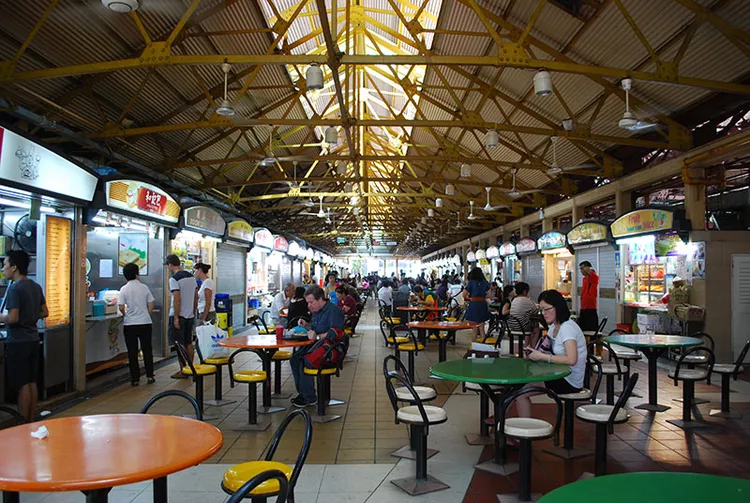Summary
The Ultimate Guide to Hawker Centers in Singapore
The superficial impression of Singapore as an uptight country goes away entirely when you engage a Singaporean on the subject of food. Singapore citizens have an abiding passion for good eating, and this is borne out by the abundance of hawker centers around the island.
Hawkers trace their roots to itinerant street food vendors, who were herded into government-built hawker centers in the 1970s and 1980s. The move seems to have done them good; today, the hawker food experience is an integral part of the average Singaporean’s daily life. “Eighty to eighty-five percent of Singaporeans eat hawker food regularly,” explains K.F. Seetoh, a food authority in Singapore.
The Singapore Hawker Center Experience
The government operates around 113 hawker centers across Singapore, and that number doubles when considering hawker-style food courts and privately-owned hawker centers like Lau Pa Sat Festival Market. In practice, the line between public and private is somewhat blurred, as private centers hire hawkers from public ones, banking on their established reputations.
The average public hawker center is part of a larger market/dining complex; venues like Tiong Bahru Food Centre and Bukit Timah Hawker Centre are examples where food centers are built atop wet markets. A smaller group of hawker centers operate independently without a market component.
These centers share certain characteristics:
- No air-conditioning; visitors may find humidity challenging, especially at noon.
- Food stalls representing Singapore’s major ethnic groups, including Indian, Malay, Chinese, and “Western” offerings. Larger centers also feature Thai, Indonesian, and Filipino cuisines.
- A dedicated drinks stall typically sells soft drinks, beer, and cigarettes.
- Seating is first-come, first-served; finding a table during peak hours can be difficult.
How to Order at a Hawker Center
Dining at a hawker center is straightforward—approach a stall, request your preferred dish, make payment, and find a table. Here are some helpful tips:
- To secure a table, you can have a friend hold it or “chope” (reserve) it by placing disposable tissues on the table.
- If language barriers arise, pointing works wonders; stall prices are usually displayed for clarity.
- Drinks must be purchased from a separate stall.
- After your meal, simply leave plates and utensils on the table; cleaning is typically handled by attendants.
What to Order at a Hawker Center
Smaller hawker centers feature about 20 stalls, while larger ones boast over a hundred. This variety can lead to “analysis paralysis” in deciding what to order.
Start with Singapore’s “national dish,” Hainanese chicken rice; many hawker centers offer this staple. Notable spots for this dish include Wee Nam Kee Chicken Rice and Tian Tian Chicken Rice at Maxwell Food Centre.
Another popular dish is satay (meat skewers), which can be found throughout the island. For excellent satay, try offerings from Old Airport Road Food Centre or Makansutra Gluttons Bay.
The flavorful flat noodle dish, char kway teow, is a must-try, found at every hawker center. Notable mentions include the Changi Road char kway teow served at the Singapore Food Trail.
Desserts elevate the hawker experience; consider trying the banana kaya or durian tempura to dive into the local culinary culture.





